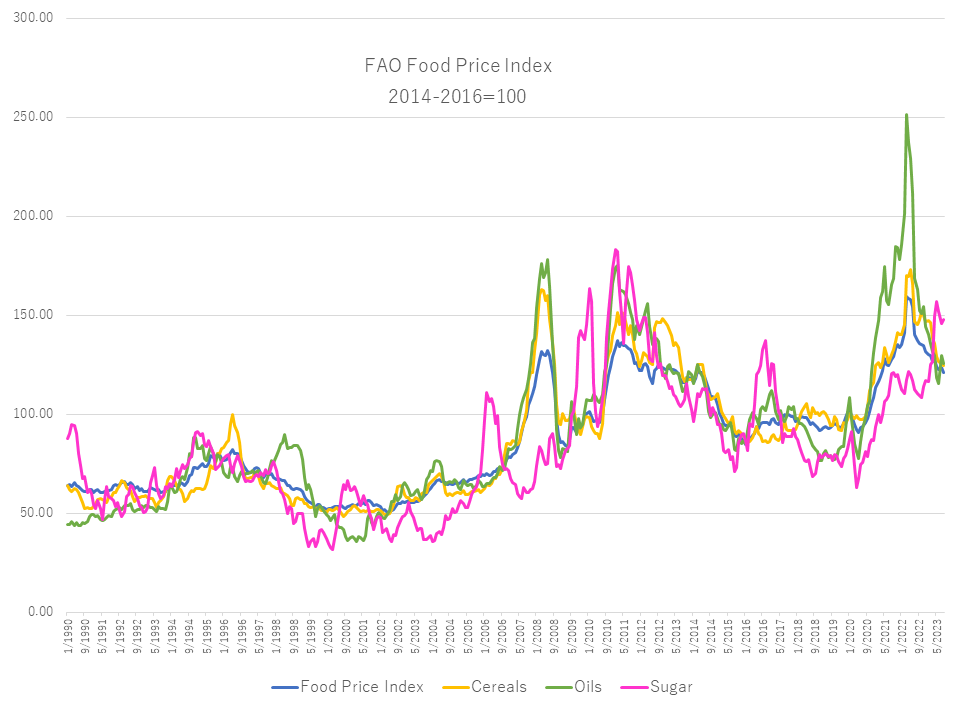Pick Up
855. August 2023 World Food Price Index

855. August 2023 World Food Price Index
On September 8, the Food and Agriculture Organization of the United Nations (FAO) released its World Food Price Index for August 2023, which averaged 121.4 points. This was a decrease of 2.6 points (2.1%) from the previous month, reversing the previous month's price increase. It was also 38.3 points (24.0%) below the peak recorded in March 2022. The decrease was mainly due to decreases in the prices of dairy products, vegetables and fruit. This downward trend was reflected in the price indices for dairy products, vegetable oil, meat and cereals, while the sugar price index recorded a moderate increase.
The Cereal Price Index fell to 125.0 in August, down 0.7% from the previous month and 14.1% from a year ago. International wheat prices fell 3.8%, driven by better-than-expected harvests in major northern hemisphere exporting countries. Corn prices experienced their seventh consecutive monthly decline, reaching their lowest level since September 2020. This decline was driven by a bumper crop in Brazil and the start of the harvest season in the United States, resulting in oversupply. In contrast, all rice-related price indexes increased by 9.8% month-over-month, reaching a 15-year high. This increase was attributed to supply chain disruptions resulting from India's imposition of export restrictions on white rice in July. Although the market was already seasonally tight due to the timing of the pre-harvest period, uncertainty over the duration of these export restrictions and their potential extension to other varieties of rice led to limited trading volumes, with players holding onto their stocks and renegotiating contracts.
The Vegetable Oil Price Index rose briefly in July, but fell to 125.8 in August, a decrease of 3.1% from the previous month. This decrease was influenced by generally low prices for palm oil, sunflower oil, soybean oil and rapeseed oil. Palm oil prices declined slightly due to reduced global import demand compared to a seasonal increase in supply from major producers in Southeast Asia. Similarly, other vegetable oils experienced weaker import demand despite steady supplies from major producing countries.
In August, the Sugar Price Index rose to 148.2 points, an increase of 1.3% from the previous month and a substantial increase of 34.1% from a year ago. There are growing concerns about the negative impact of the El Niño phenomenon on sugar supplies. India experienced below-average rainfall in August and Thailand reported prolonged dry conditions, both of which are expected to severely impact cane production. In Brazil, heavy rains disrupted farming operations in certain regions, but the combination of a robust harvest, the depreciation of the Brazilian real against the US dollar and low ethanol prices helped to mitigate the sharp rise in international sugar prices.
While international food prices may be on an overall downward trend, it is important to recognize that the effects of abnormal weather patterns associated with the El Niño phenomenon are being felt in the rice and sugar markets. As a result, vigilant monitoring of these sectors is imperative to assess and address any potential challenges or disruptions.
Contributor: IIYAMA Miyuki (Information Program)
